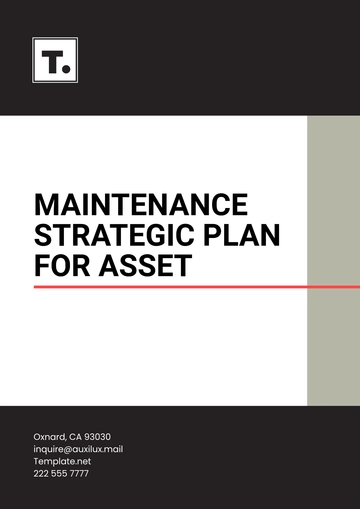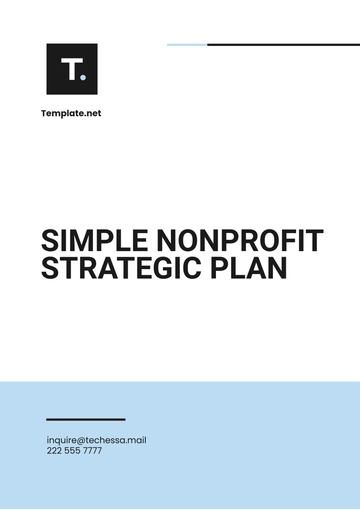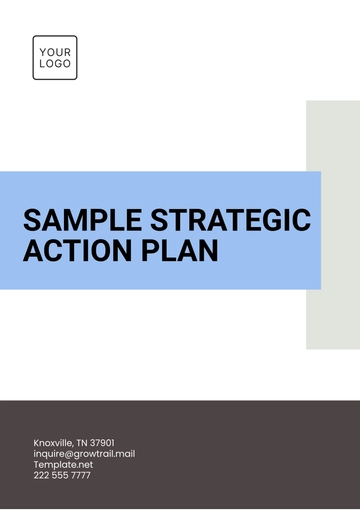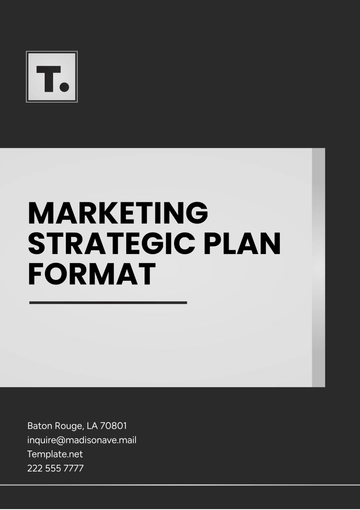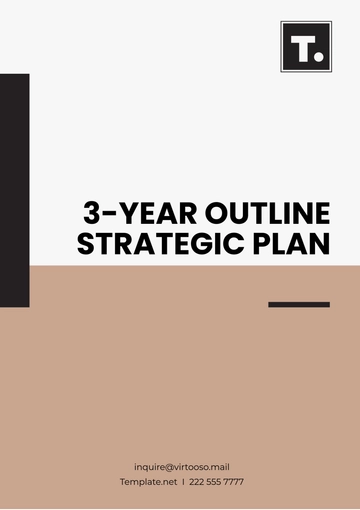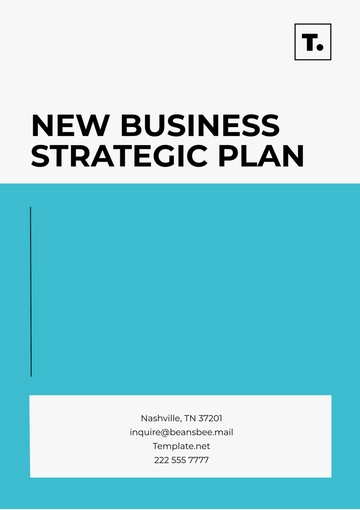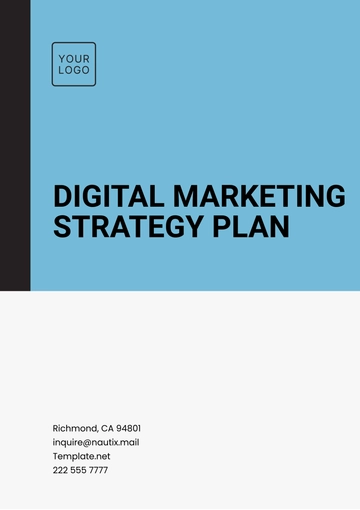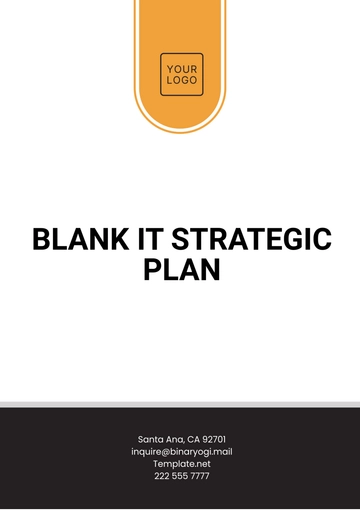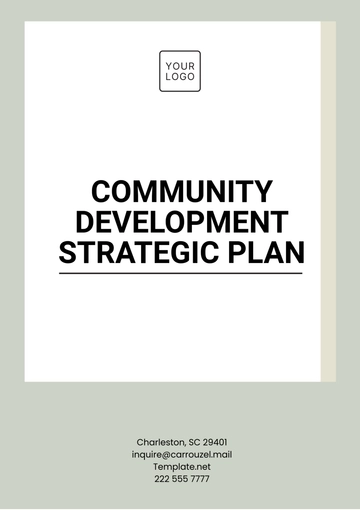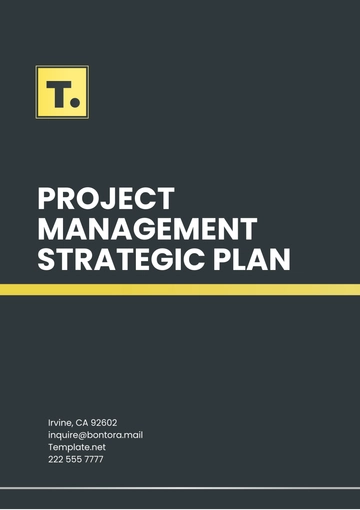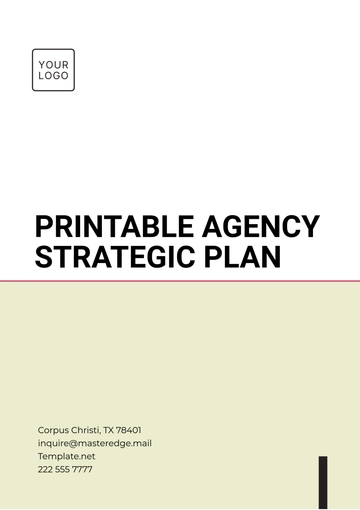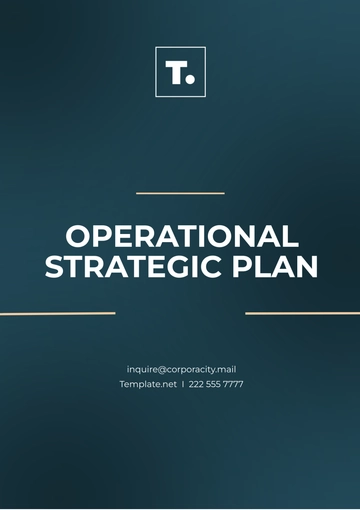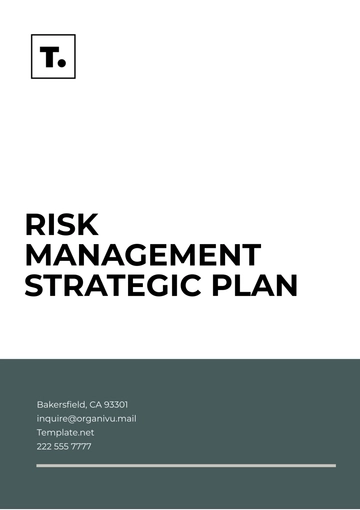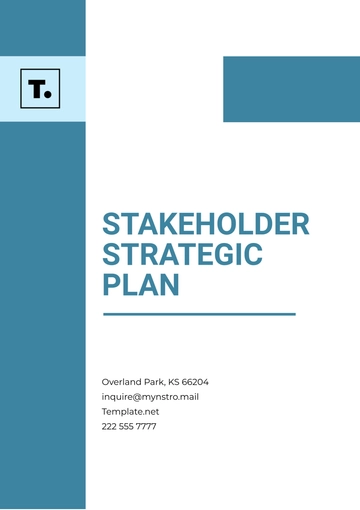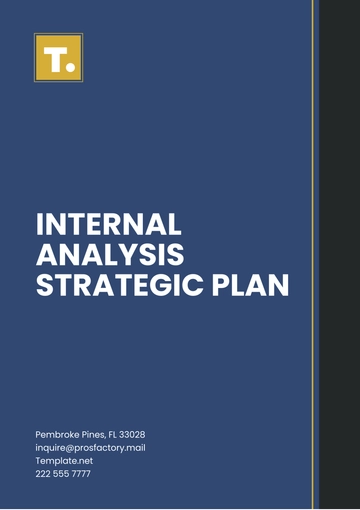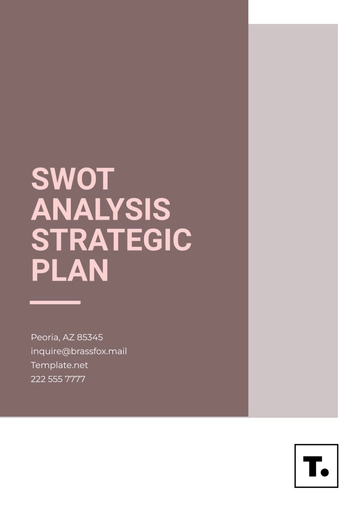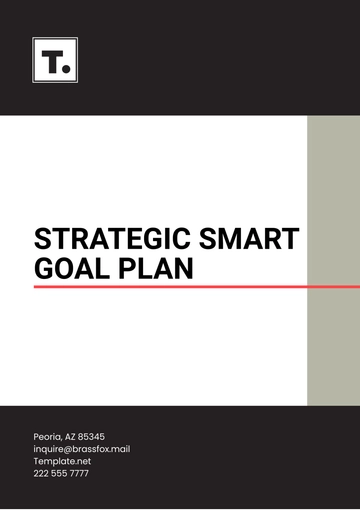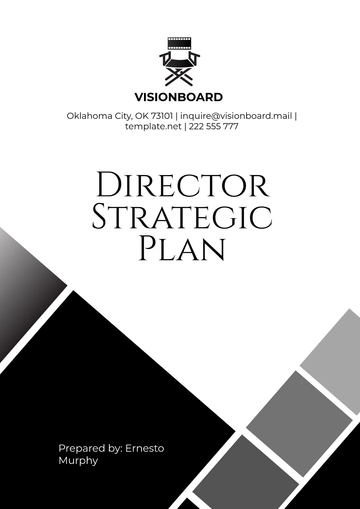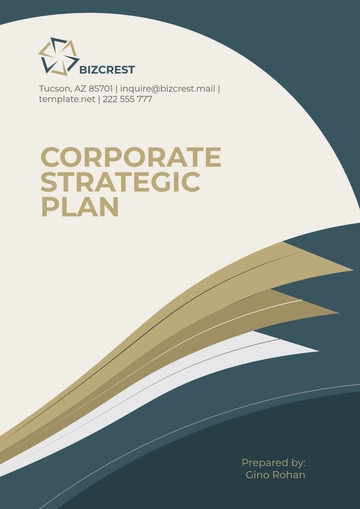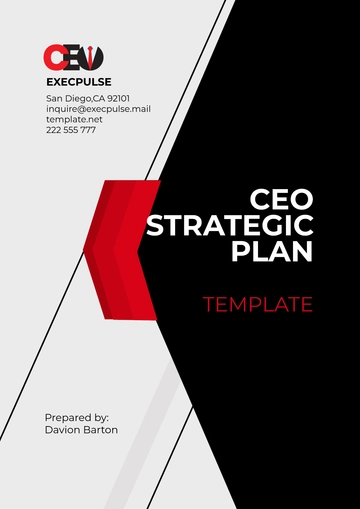Free Sales Strategic Plan to Optimize Commission Payouts

I. Identifying Goals
The first and most crucial step in formulating a strategic sales plan is setting clear, measurable, and attainable goals. The overarching objective of [Your Company Name] is to refine and optimize our commission payout structure. This endeavor aims at achieving three key outcomes:
Increase Sales Volume: Boosting sales figures is not just about hitting higher numbers; it's about fostering a culture of continuous improvement and growth. By setting ambitious yet attainable sales targets, we push our sales team to extend beyond their comfort zones, driving both personal and organizational growth.
Maximize Earnings for Sales Staff: A well-structured commission plan serves as a powerful incentive for sales staff. By optimizing payouts, we aim to not only reward top performers generously but also ensure that the compensation scheme is motivating and equitable for all sales personnel, regardless of their tier or tenure.
Promote High-Quality Outputs and Client Satisfaction: The final goal underscores the importance of not just selling more but selling better. Quality of service and product, alongside the satisfaction of our clients, are paramount. Our commission plan should encourage behaviors that enhance customer relationships and retention, such as after-sales support, personalized consulting, and proactive problem-solving.
II. Evaluating Current Commission Structure
Before we can embark on the journey of optimization, a thorough evaluation of the existing commission structure is imperative. This analysis involves dissecting the current system to highlight its strengths and expose its weaknesses. The evaluation process will be guided by several critical questions:
Is the Current Structure Fair?: Assess whether the commission payouts are equitable across different sales roles and performance levels. Fairness in compensation ensures motivation and retention of the sales team.
Does It Drive Desired Behaviors?: Determine if the current commission structure incentivizes the sales behaviors that align with our strategic goals. Are high-quality sales and client satisfaction being rewarded adequately?
Is It Competitive?: Compare our commission structure with industry standards and competitors. Staying competitive in our compensation package is crucial for attracting and retaining top sales talent.
Administrative Efficiency: Evaluate the ease and efficiency of administering the current commission structure. Complex systems can create bottlenecks and discrepancies in payouts, leading to dissatisfaction and decreased motivation.
The insights garnered from this evaluation will form the foundation upon which our optimized commission plan will be built.
III. Improving Communication
The successful implementation of any strategic plan, particularly one that directly affects compensation, hinges on effective communication. Engaging the sales team from the outset not only fosters a sense of ownership and buy-in but also encourages collaboration and the exchange of ideas. The strategy for enhancing communication involves multiple avenues:
Training Programs: Dedicated training sessions will be organized to clearly explain the new commission structure, including the rationale behind the changes and how it benefits the sales team. These sessions will also address any questions or concerns, ensuring clarity and transparency.
Team Meetings: Regular team meetings will serve as platforms for open discussions, allowing sales personnel to share their feedback, experiences, and suggestions for further improvements. These meetings will be crucial for monitoring the pulse of the sales team and making adjustments as needed.
Feedback Loops: Establishing structured feedback mechanisms, such as surveys and suggestion boxes, will enable continuous collection of feedback from the sales team. This ongoing dialogue ensures that the commission plan remains relevant, fair, and motivating.
Leadership Engagement: Sales leadership will play a pivotal role in the communication strategy. By actively endorsing the new commission structure and engaging with their teams, leaders can drive home the plan's benefits and ensure its successful adoption.
By identifying clear goals, conducting a thorough evaluation of our current commission structure, and implementing a comprehensive communication strategy, [Your Company Name] lays the groundwork for a more motivated, productive, and satisfied sales force. This strategic approach not only optimizes commission payouts but also aligns sales efforts with the broader organizational objectives, setting the stage for sustained growth and success.
IV. Adjusting Commission Model
Choosing the right commission model is a nuanced decision that significantly impacts the motivation and performance of a sales team. [Your Company Name]'s strategic plan to optimize commission payouts involves carefully considering the unique dynamics of our industry, the motivation levels of our sales team, and the resources available to us. Each commission model offers distinct advantages and challenges, and the goal is to select a structure that best aligns with our strategic objectives, encourages desirable sales behaviors, and fosters a healthy, competitive, and collaborative sales environment.
The decision-making process involves a thorough analysis of various models, weighing their pros and cons in the context of our specific business needs. Factors such as the complexity of the sales process, the length of the sales cycle, the level of teamwork required, and the importance of individual effort versus team achievements play a crucial role in this evaluation. Furthermore, the chosen model must adapt to changing market conditions, ensuring that it remains effective and equitable over time.
Table 1: Comparison of Commission Models
Below is a table that offers a comparative overview of three popular commission models: Straight Commission, Tiered Commission, and Territory Volume Commission. This table highlights the advantages and disadvantages of each model, providing a snapshot of how they might impact sales team dynamics, motivation, and performance.
Model | Pros | Cons |
|---|---|---|
Straight Commission | Straightforward, easily understood | Can discourage team spirit |
Tiered Commission | Encourages high performance | May limit top performers |
Territory Volume | Can encourage teamwork | May discourage individual effort |
Straight Commission: This model is the simplest, where sales personnel earn a percentage of the sales they generate. Its straightforwardness is its strength, ensuring clarity in understanding how efforts translate into earnings. However, it risks fostering a highly competitive environment that might undermine team cohesion and collaborative efforts, especially in scenarios requiring team sales approaches.
Tiered Commission: Designed to incentivize exceeding sales targets, the tiered commission model increases the commission rate as sales personnel hit higher sales brackets. This model effectively motivates individuals to push beyond basic targets, driving overall sales growth. Yet, it's important to balance the tiers to ensure they are challenging but attainable, avoiding potential demotivation among the sales team.
Territory Volume: Focusing on the collective performance of a sales team within a specific territory, this model encourages teamwork and collaborative selling strategies. It's particularly useful in industries where comprehensive solutions and customer satisfaction are paramount. The challenge lies in maintaining individual motivation, as the model may inadvertently de-emphasize personal sales contributions.
The choice of commission model is a strategic decision that requires careful consideration of [Your Company Name]'s specific circumstances, goals, and team dynamics. By analyzing the pros and cons of each model, we aim to implement a commission structure that not only drives sales and profitability but also promotes a positive and collaborative sales culture. This strategic adjustment to our commission model is a crucial step toward optimizing our sales force's performance and achieving our organizational objectives.
V. Aligning Incentives with Strategic Goals
The core of an effective commission structure lies in its alignment with the overarching strategic goals of [Your Company Name]. This alignment ensures that every sale and customer interaction drives the company closer to achieving its objectives. Incentives play a pivotal role in guiding sales behaviors, motivating the sales team to prioritize activities that contribute most significantly to the company’s success. For instance, if the strategic goal is to expand into new markets, the commission structure could be designed to reward sales in those specific areas more generously. Similarly, if the focus is on selling a new product line, higher commissions could be offered for these products. This alignment not only clarifies the company’s priorities for the sales team but also creates a direct pathway for their contribution to organizational success. Regularly reviewing and realigning incentives ensures that the sales team remains focused on current company goals, adapting to shifts in strategy and market conditions.
VI. Automating Commission Calculation
Automation in commission calculation is not just a convenience; it's a strategic necessity. Manual calculations are prone to errors and can lead to inconsistencies that undermine trust in the commission system. By implementing a robust commission software solution, [Your Company Name] can ensure accuracy, transparency, and fairness in the payout process. This technology streamlines administrative tasks, allowing sales and finance teams to focus on more strategic activities. Moreover, automated systems can offer real-time tracking and reporting features, giving sales personnel immediate access to their sales performance and expected commissions. This transparency boosts motivation and can significantly improve sales productivity. Choosing the right software requires careful consideration of the company’s specific needs, including scalability, integration capabilities with existing CRM or ERP systems, and the level of customer support provided by the software vendor.
VII. Monitoring and Evaluation
An effective commission plan requires more than just implementation; it necessitates ongoing monitoring and evaluation. This continuous oversight ensures that the plan remains effective, competitive, and aligned with both market conditions and company objectives. Key performance indicators (KPIs) such as sales growth, customer retention rates, and product mix sold are essential metrics to track. Regular evaluation meetings should be held to review these KPIs, discuss the effectiveness of the current commission structure, and identify areas for improvement. This process allows [Your Company Name] to remain agile, making timely adjustments to the commission plan in response to performance trends, market changes, or shifts in strategic direction. Continuous monitoring and evaluation also serve as a feedback mechanism, signaling to the sales team that their efforts are being recognized and that the company is committed to supporting their success.
VIII. Updating the Plan
The dynamic nature of the business environment necessitates that the commission plan is not static but evolves. Changes in market conditions, competitive landscape, and company strategy should prompt a reevaluation and, if necessary, a revision of the commission plan. This flexibility ensures that the plan remains relevant and continues to effectively motivate and reward the sales team. [Your Company Name] should establish a regular review cycle for the commission plan, involving stakeholders from sales, finance, and HR to provide a comprehensive perspective. During these reviews, the impact of the commission plan on sales behaviors, customer engagement, and overall sales performance should be assessed. Updates to the plan should be communicated clearly and promptly to the sales team, along with the rationale for the changes, to maintain transparency and trust in the process.
IX. Feedback and Improvement
Feedback from the sales team is invaluable in refining and optimizing the commission plan. Their day-to-day experiences provide critical insights into the plan’s effectiveness and areas where it may fall short. Encouraging an open dialogue about the commission structure not only helps identify potential improvements but also fosters a sense of ownership among the sales team. [Your Company Name] can facilitate this feedback through regular surveys, suggestion boxes, and discussion forums. Moreover, incorporating sales team feedback into the plan review process demonstrates the company’s commitment to supporting its sales personnel. This collaborative approach to commission management ensures that the plan not only drives sales performance but also aligns with the sales team’s needs and expectations, leading to enhanced motivation, productivity, and ultimately, company success.
In conclusion, by aligning incentives with strategic goals, automating commission calculations, conducting regular monitoring and evaluations, updating the plan as needed, and incorporating feedback for continuous improvement, [Your Company Name] establishes a commission structure that is fair, transparent, and effective. This strategic approach to commission management supports not only the achievement of sales targets but also the overall growth and success of the company.
- 100% Customizable, free editor
- Access 1 Million+ Templates, photo’s & graphics
- Download or share as a template
- Click and replace photos, graphics, text, backgrounds
- Resize, crop, AI write & more
- Access advanced editor
Unlock your sales team's full potential with the Sales Strategic Plan to Optimize Commission Payouts Template from Template.net. This comprehensive and editable document through our AI editor tool empowers you to refine your commission structure, set clear objectives, and drive performance. Maximize earnings, streamline processes, and achieve sales success with this strategic template.
